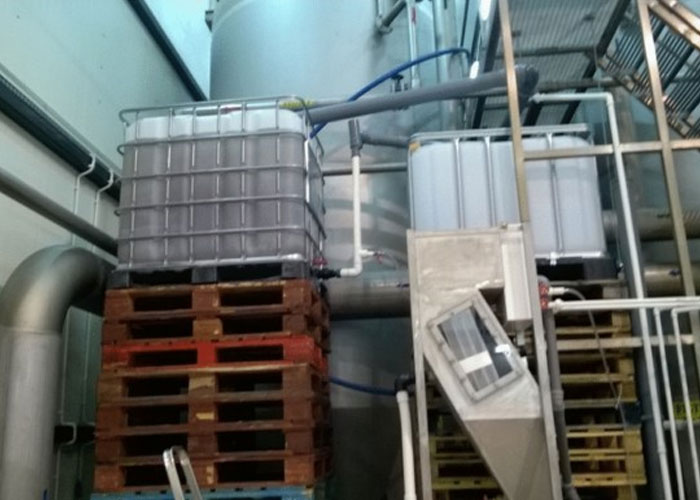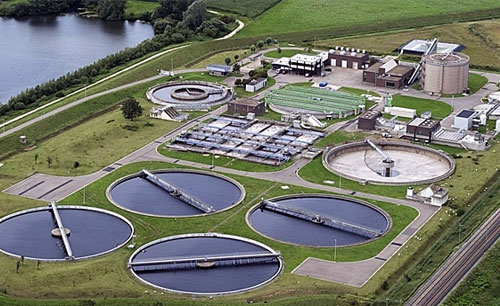Sewage treatment is a process that removes contaminants from wastewater. The result is effluent that is safe to discharge into waterways. This process also helps prevent the pollution of waterways from raw sewage discharges. Sewage treatment can take place in several ways.
Process of removing contaminants from wastewater
Processes that remove contaminants from wastewater include biofiltration, oxidation/reduction, filtration, ion exchange, and membrane processes. Chemical oxidation is a common process used to remove persistent pollutants. It works best for pollutants that are diluted or low in concentration. This method is also useful for pollutants that have been degraded into toxic metabolites.
A Sewage Treatment Plant is the process of treating sewage into a drinkable substance. In the past, humans have used sewage to fertilize their fields and plants. However, sewage treatment has become increasingly controversial and has been linked to severe problems with surface water. For example, the water in Toledo, Ohio, was contaminated by harmful algal blooms last summer, and fish kills have been reported off the coast of Long Island. Meanwhile, the dead zone in the Gulf of Mexico is believed to result from untreated sewage. The EPA estimates that 23,000 to 75,000 sanitary sewer overflows occur every year.
The composition of wastewater must be known to design a treatment process. For example, the solids and dissolved oxygen content can influence the removal process. Other considerations include toxicity and metal speciation. The presence of oil or grease may pose operational issues. Special facilities may be required to remove these materials
Secondary treatment is often required for wastewater treatment, but it applies to many industrial and agricultural wastewaters. The sewage treated in this way is known as activated sludge. The sludge is subjected to a high degree of physical and chemical pressure to break down organic matter. Once this has been accomplished, the wastewater is pumped through a secondary treatment stage, removing contaminants and sludge.
The tertiary treatment stage is similar to that used in drinking water treatment plants. This process can remove up to 99 per cent of impurities from wastewater, close to drinking water quality. However, this process is costly and requires special equipment, highly trained operators, and a steady energy supply. Additionally, the effluent water produced at this stage may still contain bacteria and disease-causing organisms.
Process of removing organic matter

In a sewage treatment plant, a process removes soluble organic matter and suspended solids. This process uses biological processes in which microbes consume the organic matter as food and convert it into energy. This process helps maintain the dissolved oxygen content in receiving waters.

There are two primary processes for removing organic matter from wastewater: primary and secondary. The primary treatment tank is used to remove light organic suspended solids. Some of these are removed by gravity in a sedimentation tank, which is typically 12 feet deep. Pumps and mechanical scrapers remove the resulting sludge from the primary treatment tank. Surface skimming equipment is also used to remove floating materials and grease.
The second biological process involves using a biological coagulant to break down the organic material. This process is used to separate oily wastewater before it is discharged or reused. In addition, it prevents pipelines from becoming clogged with oil and grease. The process also involves filtration, chemical treatment, and membrane processes. Organic dyes are commonly present in wastewater and are a result of industrial processes such as dyeing. These dyes are found in the food, textile, and medicine industries.
The primary solid concentration in the primary sludge tank rises from zero to 10%, and the secondary sludge thickens to around three per cent solids. The final process, anaerobic digestion, uses microorganisms to break down the organic matter without the presence of oxygen. The primary digester tank is heated to 98 degrees Fahrenheit, and mixing occurs for about 35 days.
Process of removing phosphates
The process of removing phosphates in a sewage treatment plant involves removing phosphorus from sewage through several processes. The removal of phosphorus can be done using a combination of active and reactive media. Reactive media filters use chemical reactions to reduce phosphorus levels in a more targeted manner. Reactive media filters can be made from industrial waste products, artificial materials, or natural materials. One commercially available nutrient removal media is Polonite, which is known to have high phosphate removal rates.
The chemical dosage for the phosphorus removal process depends on the alkalinity of wastewater. The final phosphorus concentration is usually below 0.5 mg/l. The amount of lime required for this process is similar to the dosages used for BOD and SS removal. The amount of lime required to adjust the wastewater's pH depends on the alkalinity level. To achieve a pH level of 11, the chemical dosage should be between two and three times the alkalinity level.
Inorganic phosphate removal is a chemical process that involves adding multivalent metal ions. These ions react with the phosphates in the wastewater and form a precipitate. This material then settles out of the wastewater. Lime, rich in calcium, reacts with phosphates to form calcium carbonate, which is then removed from the water.







































Share Post